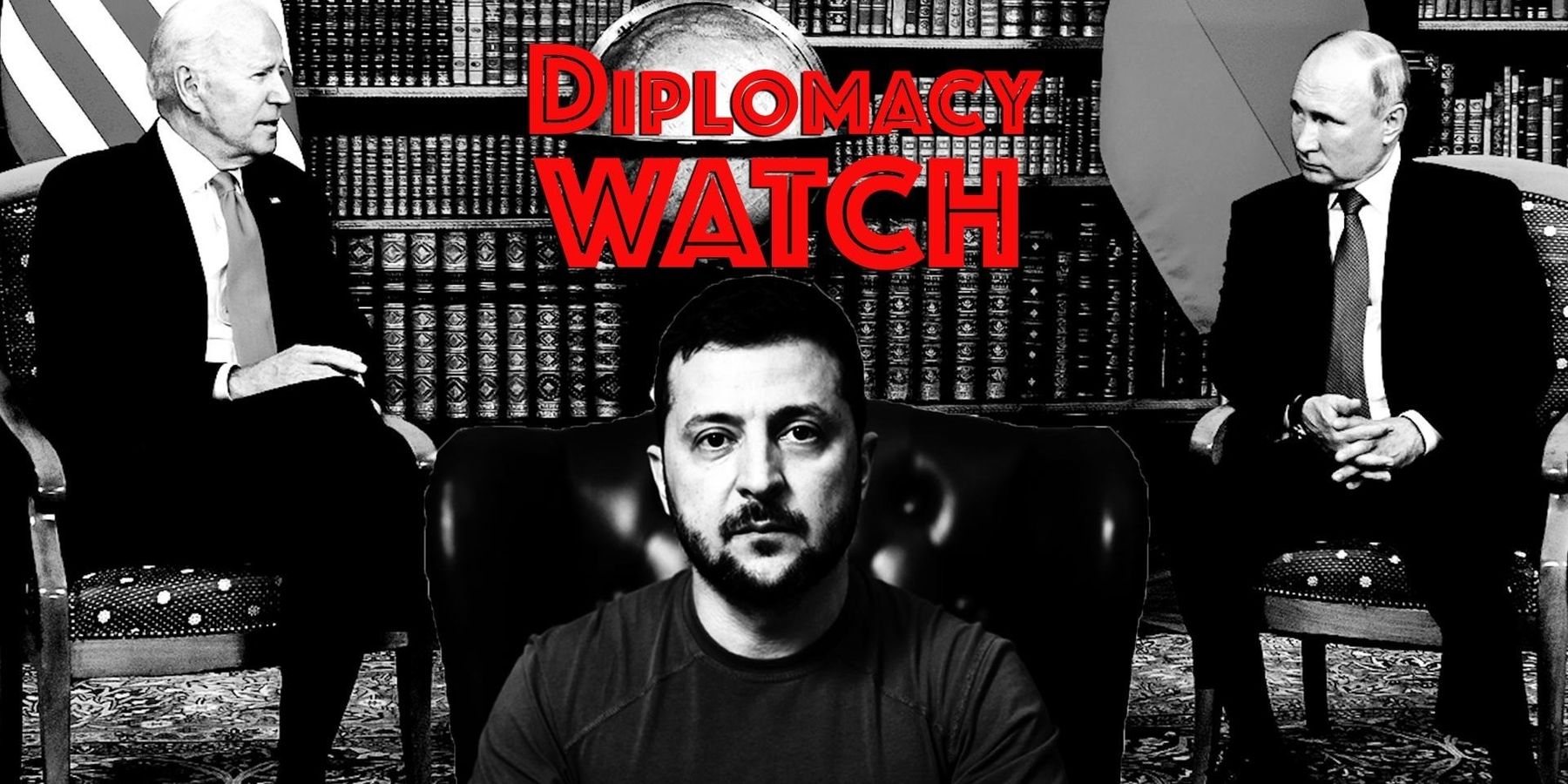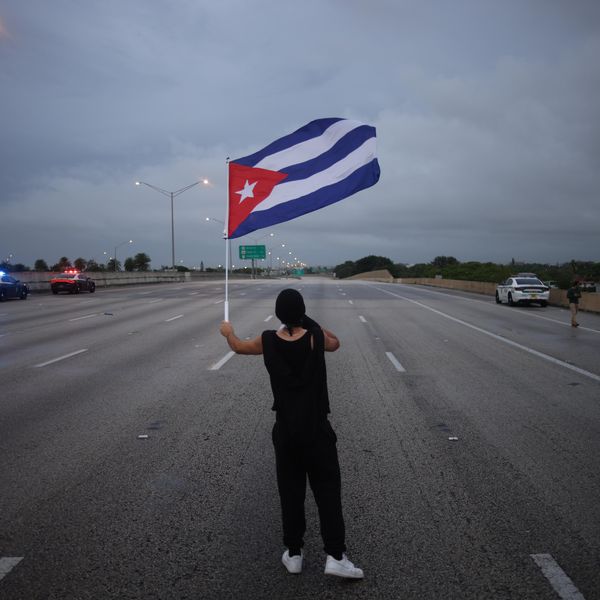The United States and Ukraine are reportedly close to signing a bilateral security agreement, as the two sides work to overcome a series of events that has left the relationship as strained as it has ever been since Russia’s invasion in February 2022.
“We are farther apart than ever since the war started,” an unnamed Ukrainian government official told the Financial Times. “It is very, very tense.”
As Kyiv’s battlefield prospects continue to look grim, President Volodymyr Zelensky is apparently frustrated with a number of Washington’s positions, including the holdup in American military aid; NATO’s continued hesitancy to offer a clear timeline for Ukraine to join the alliance; and the Biden administration’s concern over Ukrainian strikes against Russian ballistic missile early-warning sites. Zelensky has also taken the rare step of criticizing his American counterpart publicly, objecting to Biden’s decision to attend a Democratic Party fundraiser instead of the Ukrainian “peace summit” in Switzerland next month.
Kyiv has hoped that the meeting in Switzerland will be the largest in a series of convenings of world leaders or other government representatives aimed at winning support for its “peace formula” with world leaders. Zelensky said that Biden’s choice was “not a strong decision,” and “Putin will only applaud his absence, personally applaud it - and standing, at that." Other U.S. officials are expected to attend the meeting.
Anonymous Ukrainian officials told the FT that Zelensky’s faith in the U.S. appears to be dwindling, with separate sources referring to the president’s mindset as “emotional and nervous” and in a state of “paranoia.”
Zelensky “thinks they [U.S. administration officials] want the war to go away before the [U.S.] election”, one Ukrainian was quoted as saying, suggesting that there are concerns in Kyiv that Washington is open to negotiations with Russia despite its public opposition.
Along with the looming security pact — which would provide Kyiv with long-term aid in a number of areas, including military training, support for Ukraine’s defense base, intelligence sharing, and economic aid — the Biden administration also acquiesced on another issue that had been another source of tension between the two countries.
On Thursday, Politico reported that the Biden administration had quietly given Ukraine the green light to use U.S. weapons to strike targets inside Russia, so long as they were hitting near the area of Kharkiv.
“It’s a stunning shift the administration initially said would escalate the war by more directly involving the U.S. in the fight,” according to Politico. “But worsening conditions for Ukraine on the battlefield –– namely Russia’s advances and improved position in Kharkiv –– led the president to change his mind.”
Secretary of State Antony Blinken had hinted that the administration was considering making such a change during a recent visit to Moldova. Both France and Germany said earlier this week that Ukraine should be allowed to use their weapons to hit targets in Russia.
In other diplomatic news related to the war in Ukraine,
— Serious frustration with the trajectory of the war is setting in on the Ukrainian frontlines. Russian forces are gaining territory for the first time since the early days of the war. Morale on the Ukrainian frontlines is at a nadir, and the government in Kyiv is resorting to extreme measures —notably the recent enacting of the unpopular mobilization law — to overcome a manpower shortage and maintain its war effort. Only 35% of Ukrainians men who are not already fighting are prepared to join the war, according to a recent survey.
“It shows a growing rift between the public face of Ukrainian society, as presented by cheerleaders calling for war till victorious end, and the private opinion of real life Ukrainian citizens, expressed through draft dodging, cross-border escapes and a seemingly widespread hatred against press gangs hunting for men,” reported journalist Leonid Ragozin in bne IntelliNews.
— Putin has signaled that he is open to discussing a ceasefire and a freezing of the battlefield along the current lines, according to a report from Reuters late last week. This is latest in a series of signs that Moscow may be interested in negotiations, though it remains unclear how seriously it may be willing to engage.
“Taking advantage of Putin’s apparent openness to a ceasefire and striking a deal now, however unpleasant, will be better for everyone: for the state of Ukraine, for its people, and for the safety of the entire world,” Branko Marcetic wrote in RS this week in response to the report. “To borrow words that were already once tragically ignored, the Biden administration should now ‘seize the moment.’”
— France is looking to put together a coalition of European countries that would send military trainers to Ukraine, according to The Financial Times.
“President Emmanuel Macron is expected to unveil France’s plan to send army trainers next Thursday when he hosts Ukrainian president Volodymyr Zelenskyy in Normandy along with other leaders, including US President Joe Biden, on the 80th anniversary of the D-Day, according to people familiar with the matter,” reports the FT.
“Macron’s proposal would entail French soldiers training Ukrainian personnel for tasks including demining operations or repairing and maintaining military equipment. It could end up involving dozens or hundreds of troops. The French president had opened the door to such a move in late February when he said sending western troops to Ukraine ‘could not be ruled out’, sparking a backlash from Germany and other Nato countries that rejected the idea as a risky escalation.”
U.S. State Department news:
During a special briefing on Wednesday, U.S. Permanent Representative to NATO Ambassador Julianne Smith was asked about the secretary-general’s plans for the alliance to put together an aid package for Kyiv.
“So, all of these things I am laying out – the institutionalization of some of the bilateral support, looking to secure additional resources, whether or not we need to appoint some sort of civilian representative of some kind, and then the language itself – will all be part of the Ukraine package, which in essence serves as a bridge to membership. And you’ve heard my colleagues on this – that bridge will be well-lit and made of steel, and we will do everything we can to help our friends from Ukraine, step by step, walk across that bridge to membership eventually,” Smith said.
“But you have also heard U.S. officials say that an invitation this summer will not be on the table. That is unlikely, but we are focused on this package of support that will help us build the bridge to membership.”
- No magic US weapon left for offensive Ukraine victory ›
- Russia's upper hand puts US-Ukraine at a crossroads ›
- Congress: Let Ukraine hit more targets inside Russia with US weapons | Responsible Statecraft ›
- Diplomacy Watch: At G7 summit, West works to reassure Ukraine | Responsible Statecraft ›
















